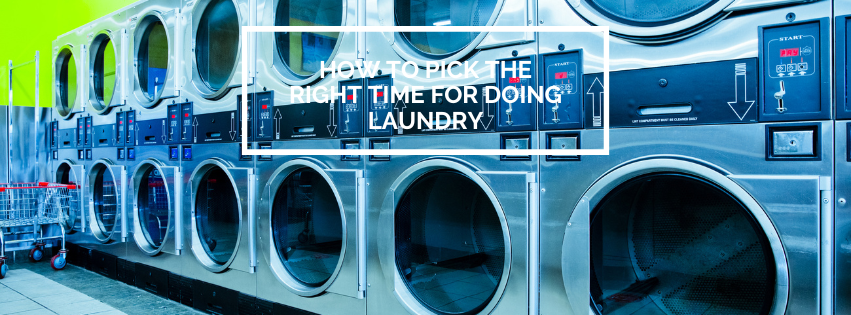Laundry, often considered a mundane task, can become more efficient and effective when timed correctly. The right timing not only ensures clean clothes but also optimizes resources and enhances convenience. Factors such as weather, energy costs, and personal schedule play pivotal roles in determining when to tackle this essential household chore. This article explores various considerations and strategies for picking the ideal time to do laundry, tailored to maximize cleanliness, minimize environmental impact, and streamline daily routines.
Understanding Laundry Dynamics
Before diving into timing specifics, it’s crucial to understand the dynamics of laundry itself. Washing clothes involves several stages—sorting, washing, drying, and folding—which collectively consume time and resources. Efficiently managing these stages can significantly impact the overall laundry experience.
Factors Influencing Laundry Timing
1. Weather and Climate Considerations:
Weather conditions play a central role in determining the best time for laundry. Factors such as temperature, humidity, and sunlight availability directly affect both washing and drying processes:
- Temperature: Warmer temperatures often facilitate quicker drying times, making sunny days ideal for hanging clothes outdoors. In contrast, colder climates may necessitate indoor drying or using drying appliances.
- Sunlight: Natural sunlight not only aids in drying clothes but also acts as a natural disinfectant, particularly beneficial for items prone to odors or bacterial growth. Choosing sunny days for laundry can thus enhance cleanliness and freshness.
- Humidity: High humidity levels can prolong drying times and potentially lead to musty odors or mold growth on damp clothes. Checking local humidity forecasts can help optimize drying conditions.
2. Energy Efficiency and Cost Savings:
Optimizing laundry timing can contribute to energy efficiency and cost savings:
- Off-Peak Energy Hours: Many utility providers offer lower energy rates during off-peak hours. Running washing machines and dryers during these times not only reduces electricity costs but also lightens the load on the electrical grid, promoting environmental sustainability.
- Load Management: Consolidating multiple loads of laundry into fewer sessions can maximize energy efficiency by reducing the number of times appliances need to be operated.
3. Personal Schedule and Convenience:
Aligning laundry activities with personal schedules enhances convenience and efficiency:
- Weekday vs. Weekend: Balancing laundry between weekdays and weekends can distribute household chores more evenly. Weekdays may offer quieter laundry facilities or fewer competing activities, while weekends can provide more flexibility for larger loads or additional tasks.
- Morning vs. Evening: Personal preferences and daily routines dictate whether mornings or evenings are more conducive to completing laundry tasks efficiently.
Strategies for Optimal Laundry Timing
1. Plan Ahead with a Schedule:
Developing a laundry schedule based on weather forecasts, energy rates, and personal availability can streamline the process. Allocate specific days or times for sorting, washing, drying, and folding to maintain consistency and avoid overwhelming laundry sessions.
2. Monitor Weather Patterns:
Keep track of local weather patterns to capitalize on favorable conditions for drying clothes outdoors. Utilize apps or websites that provide detailed weather forecasts, including humidity levels and sunlight duration, to plan laundry activities accordingly.
3. Energy Management Tips:
- Off-Peak Hours: Take advantage of off-peak electricity rates by scheduling laundry during early morning or late evening hours, depending on utility provider schedules.
- Energy-Efficient Appliances: Invest in energy-efficient washing machines and dryers equipped with programmable settings to optimize resource usage and minimize environmental impact.
4. Adjust Based on Seasonal Changes:
Adapt laundry routines to seasonal variations in weather and daylight hours. During winter months, prioritize indoor drying methods or utilize dryer settings tailored for colder temperatures. In contrast, maximize outdoor drying opportunities during warmer seasons to capitalize on sunlight and natural ventilation.
5. Incorporate Environmental Considerations:
Promote sustainability by integrating eco-friendly practices into laundry routines. Use cold water settings whenever possible to conserve energy and preserve fabric colors. Consider air-drying clothes to minimize reliance on electric dryers and reduce carbon footprints.
Conclusion
Efficient laundry management hinges on selecting the right time to initiate and complete washing, drying, and folding tasks. By leveraging weather forecasts, energy efficiency strategies, and personal scheduling preferences, individuals can optimize their laundry routines to achieve clean, fresh-smelling clothes while minimizing environmental impact and operational costs. Whether navigating seasonal changes or coordinating with off-peak energy hours, thoughtful planning and flexibility enable a seamless laundry experience that enhances household efficiency and convenience. Embrace these strategies to transform laundry from a routine chore into a well-coordinated practice that supports sustainable living and everyday comfort.



